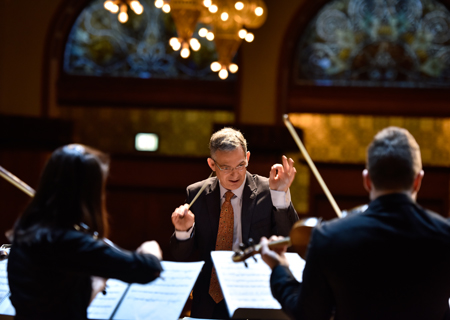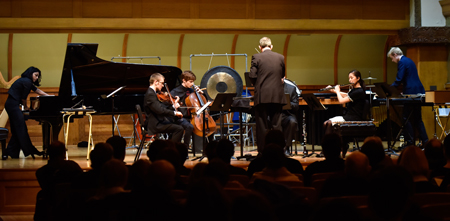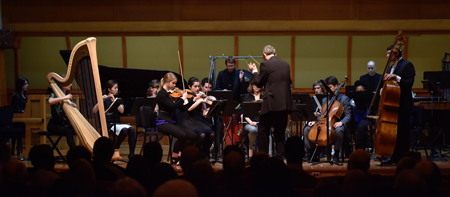by Mike Telin

One institution responsible for the advancement of the new music cause is the Oberlin Conservatory of Music. The school’s dedication to musical innovation was fully realized on Friday, January 29 in Roosevelt University’s Ganz Hall in Chicago, when Timothy Weiss led the celebrated Oberlin Contemporary Music Ensemble in two performances of a program of captivating works by six of today’s leading composers. I attended the 7:00 pm concert.




Following a brief pause for furniture moving, Weiss continued the evening with French composer Marc-André Dalbavie’s semi-impressionistic Melodia from 2009. Written for an ensemble of twelve instruments, the piece is largely a prelude to a melody reminiscent of Gregorian chant. The brief work paints a novel musical narrative with a lot of downward, sliding pitches. Weiss drew a poised, expressive performance from his players.

Photos by Yevhen Gulenko courtesy of the Oberlin Conservatory of Music.
 Mike Telin serves as Executive Editor at ClevelandClassical.com. After receiving his musical training in bassoon at Oberlin Conservatory, he went on to perform with such Northeast Ohio orchestras as the Canton Symphony, Akron Symphony, Cleveland Chamber Symphony, and Trinity Chamber Orchestra. He served as Executive Director of Music & Performing Arts at Trinity Cathedral for fifteen years. Currently he team-teaches Introduction to Music Criticism at Oberlin College and Conservatory and has team-taught public interest research at Baldwin Wallace University.
Mike Telin serves as Executive Editor at ClevelandClassical.com. After receiving his musical training in bassoon at Oberlin Conservatory, he went on to perform with such Northeast Ohio orchestras as the Canton Symphony, Akron Symphony, Cleveland Chamber Symphony, and Trinity Chamber Orchestra. He served as Executive Director of Music & Performing Arts at Trinity Cathedral for fifteen years. Currently he team-teaches Introduction to Music Criticism at Oberlin College and Conservatory and has team-taught public interest research at Baldwin Wallace University.
Published on ClevelandClassical.com February 8, 2016.
Click here for a printable copy of this article



